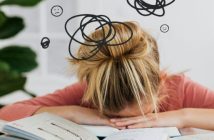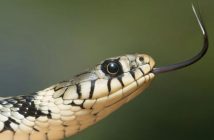 Stress is one of those constants that we all have in common, yet the type we experience and how our bodies and minds manage it is unique to each individual. Treatment varies, and when you have children, you must also identify the best ways to help them handle the stress in their young lives.
Stress is one of those constants that we all have in common, yet the type we experience and how our bodies and minds manage it is unique to each individual. Treatment varies, and when you have children, you must also identify the best ways to help them handle the stress in their young lives.
Expats in China have a unique opportunity to explore alternative ways to combat negative stress. Living here – where Traditional Chinese Medicine (TCM) originated – makes China a more credible source, especially if you’re a skeptic. Alternative choices include therapeutic massage and chiropractic care.
Traditional Chinese Medicine
If you’re familiar with yin and yang, then you’re familiar with the concept behind traditional Chinese medicine (TCM) – two things that appear to be polar opposites, but actually work together for the greater whole.
It’s a common understanding that Western medicine tends to focus on treating the disease, whereas TCM focuses on preventing the disease. Based on theories developed in China over 2,000 years ago, TCM doctors treat patients by looking at the whole body. For example, they assess patients through observation, taking a pulse, and looking at the tongue, determining the causes of diseases so that they can treat the underlying problem.
Dr. Li Zuzhen of Hong Kong International Medical Clinic in Beijing has been practicing TCM for 50 years. She points out that because everyone is different, no single treatment for a common illness will fit all patients. It takes time to determine the root cause.
There are two parts to TCM. The first is the concept of wholeness; the second is treatment upon syndrome differentiation.
Wholeness refers to finding the base problem of a health issue. In Western medicine, a headache is treated with medication, but the cause isn’ t typically explored. In a whole body assessment, a headache could be a result of stress, high blood pressure, anemia, or a tumor. Treatment is based on the underlying cause.
The second part of TCM is syndrome differentiation, meaning that treatment goes through phases, or stations. The health problem is treated one way at first, then adjusted based on results of that first phase. It is here that outside forces such as seasons, climate, or weather are assessed, as they play a role in treatment.
Western medicine tends to rely on data such as blood tests and X-rays, whereas Eastern practices focuses more on personal experience and patient history. In many ways, combining Western and Eastern treatments is often the most beneficial. For instance, an X-ray could be used to identify the problem and a TCM treatment could be applied afterward. TCM doctors, however, believe that a patient shouldn’t continue Western medicine once properly diagnosed to avoid becoming reliant on the medication.
Of TCM, Dr. Li says: “We can use different ways to treat one disease, and we can use one way to treat different diseases.” Common TCM practices – including acupuncture, acupressure, cupping, or tai chi – all relate to the whole body concept. These achieve a balance of energy in the body needed for proper health. When there is stress, the natural flow of energy in the body is interrupted, depriving the body of blood and nutrition. The liver area is a prime indicator of stress by-products, such as anger and insomnia, so finding a balance within the body is essential to finding the balance for stress.
Can we use some simple techniques on our own to combat stress levels? Yes, says Dr. Li. But remember that you won’t find the root cause of stress in your body, defeating the purpose of TCM.
Herbals are another mystifying aspect of TCM. There are both prescription and over-the-counter medicines available. Simply assuming that anything can be mixed together without harm just because it’s herbal is false; some are quite potent. A prescribed herbal mixture is combined by a TCM pharmacist. Boiled together, this becomes a “medication soup” used to treat the ailment. An added benefit to TCM is that it tends to be more economical, because it tackles the root of the problem and
might not require the continual visits that Western medicine does.
Massage
It’s very common for people to ignore medical problems until a disease sets in. Whether using TCM, massage or chiropractic care, a bit of backtracking is necessary to assess the cause and make up for lost time.
Dr. David Zhang is a doctor working in integrative medicine at Beijing United Family Hospital and Clinics, where he specializes in chiropractic care. He is also the owner of Joyful Bliss Wellness Center. By combining both massage and chiropractic services, Dr. Zhang believes that many illnesses and diseases can be prevented, managed or cured.
Just the thought of a massage lends itself to feelings of relaxation. Yet therapeutic massage has specific purposes and is less relaxing, instead focusing on neural-muscular education combined with massage techniques. Specific issues can be targeted and treated with focused massage.
When massage is used specifically to treat stress, Dr. Zhang recommends familiarizing oneself with relaxing massages first. Going straight into a medical massage tends to create the fight-or-flight reflex. When acupressure is stronger than expected, patients don’t relax, muscles tense up, and the positive effects of the massage are lost.
Reflexology, a combination of TCM and Western treatment, feels more like a medical massage. When a masseuse understands how anatomy, body structure, and bones work together, finding the pressure points is key to relieving pain or stress.
We often use pressure points on ourselves without realizing it’s a form of massage or acupressure. When you have a knot in your back, you rub it to relieve the pain, or you back in front of a hot fire to warm the body before massaging the pain out. Heat, combined with massage, allows the muscles to relax and allows the healing to begin.
Chiropractic Treatments
The history of chiropractic treatment began in the US back in 1895. There has been much skepticism about the validity and effectiveness of the practice, but those who have obtained successful relief tout its positive points.
The spine’s alignment is easily jarred by sports, accidents, or even twisting the wrong way unintentionally. Spinal issues are usually gradual, so sometimes the pain from that forgotten incident doesn’t resurface for many years. However, taking care to keep your spine adjusted properly can not only keep pains at bay in the future, but also prevents potential nerve, muscle, or organ damage.
As our bodies age and degenerate, it’s important to keep on top of spinal alignment. Soft tissue discs are affected by simple things such as wearing the wrong kind of shoe or sitting the wrong way at the computer desk. A healthy spine means a healthy body.
Do-It-Yourself Stress Relief
Here are some simple things you can try at home to help ease stress. Learning more about your body as a whole may take a little more effort, but it’s also a good investment for your long-term health.
- Practice good posture. Slouching and jutting the head or neck forward when working on a computer slows blood flow to the brain, which leads to fatigue, stress, and depression.
- Take a foot bath. Soaking feet in hot water warms the entire body, increasing blood flow upwards and relieving stress. This practice is excellent before a foot massage. Adding sliced ginger root to the water is helpful for expelling cold and dampness.
- Exercise is always good to combat stress, as is calming the mind through qigong.
- Balance is key with both diet and body warmth, especially for children. Too much or too little overloads the body and negatively affects major organs.
- Get plenty of sleep.
- Moist heat is best in cold, dry Beijing. Heating pads, hot water bottles, or wet towels heated in the microwave are all good solutions. Placing them around the neck opens blood flow to the brain. (This is great to try when doing computer work.)
- Keep your feet warm. The Chinese believe that cold gets into our bodies through the feet.
- Chop up ginger with sugar or honey into boiling water, then drink it to relieve a common cold. Don’t make it too concentrated or it will upset the stomach. In the winter, add ginger to tea. In the summer, use lemon instead.
Resources
Dr. Li Zuzhen
Hong Kong International Medical Clinic, Beijing; 9/F, Office Tower, Hong Kong Macau Center Swissotel, 2 Chaoyangmen Beidajie (6501 3806, 6553 2288 ext 2345/46/47) 北京港澳国际医务诊所, 东城区北京港澳国际医务诊所, 朝阳门北大街2号港澳中心办公楼9层
Dr. David Zhang
Joyful Bliss Wellness Center, 3/F, 32 Liangma Qiao Lu, Chaoyang District (next to Golden Land Office Building) (6433 6232) 朝阳区亮马桥路32号 高澜大厦附楼三层
This article is excerpted from the beijingkids Jan/Feb 2012 issue. View it in PDF form here or contact distribution@beijing-kids.com to find out where you can pick up your free copy.



